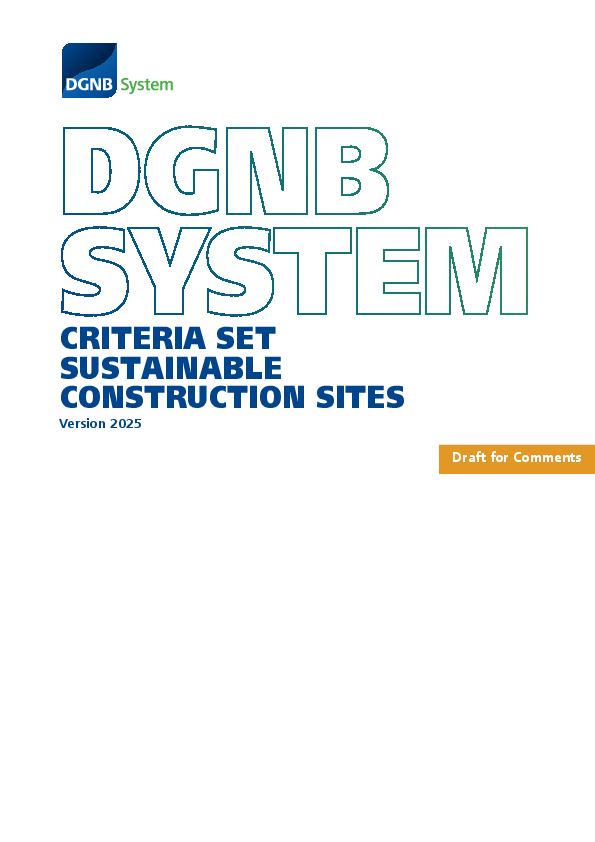Development of the market version of the DGNB System for Sustainable Construction Sites
In cooperation with the Austrian Sustainable Building Council (ÖGNI), the DGNB has further developed its certification system for sustainable construction sites. The system has been in its pilot phase since 2021 and is now being developed into a market version. To this end, feedback from initial users was collected through a survey, and existing certification projects were evaluated as part of the preparatory phase.
The revised version was available for public comment until 31 October 2025. The commenting served to validate the applicability and practicality of the formulated requirements and methods.
Please note: The commenting phase has ended. Based on the feedback received, the market version is expected to be finalised in spring 2026. Below is an overview of the most important new features.
Key facts on the draft version at a glance
This set of criteria marks the development of the DGNB System for Sustainable Construction Sites from its 2021 pilot phase into the market version. The aims of the revision are to clarify ambiguities, refine requirements and optimise application.
Further down this page, you will find a list of all the new features in the individual criteria.
Compatibility and international relevance
The review process of the DGNB System for Sustainable Construction Sites has also focused on compatibility with other DGNB rating systems to reduce the documentation required where content overlaps. These include the DGNB System for New Construction, Version 2018 and Version 2023, the DGNB System for Deconstruction, Version 2020, the DGNB System for Renovation, Version 2021, the DGNB System for Districts, Version 2020 and the DGNB Building Resource Passport.
A construction site itself cannot be considered compliant with the EU taxonomy within DGNB Certification. However, if ESG Verification for the EU Taxonomy of the construction project is sought, the certification system for construction sites can provide evidence for certain EU taxonomy requirements reflected in the criteria set. In addition, there are synergies with the Sustainable Development Goals (SDGs) and the Level(s) framework.
By aligning with international standards, the new version of the system can be used throughout Europe. Deviations in methods or validation were made only in exceptional cases to accommodate the requirements of specific countries.
Changes to individual criteria
- Clarification of requirements/methodology, in particular:
1.1 Explanatory report on construction site planning
1.3 Contents of the construction site installation plan
1.4 Minimum scope of site regulations
2. Measures for the avoidance of impacts on the local environment by the construction site - New indicator: 1.2 Impact between the construction site and the environment
- Elimination of indicator 3.1.1 Investigations and measures for specific reasons/pandemic
- Specific examples of preventive measures, health-promoting and social measures
- Specific requirements for hazard assessment and documentation
- New indicators:
1.4 Workplace quality survey
2.2 Documentation of accidents
3.5 Ensuring communication on the construction site through interpreters
- Introduction of an analysis of the affected groups of people for the communication strategy
- Compilation of the individual indicators from the pilot phase into a list of measures
- Option to select a communication strategy based on proposed measures
- Differentiation of measure packages based on the scope for action or decision-making
- Requirements for the digitisation of documents have been defined in some indicators
- Specification of requirements/methodology:
1.6 Use of intelligent machine control and automated construction processes
2. Quality assurance of construction products used
3. Quality assurance planning: Differentiation between building construction and industrial construction versus civil engineering and infrastructure projects
Your contact
For any queries about the commenting phase, please email us at baustelle@dgnb.de.

